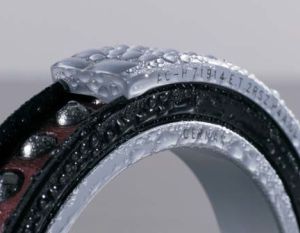 A variety of processes and new materials have been developed in recent years that are designed to meet the demanding and extremely varied technical and commercial needs of today. The material surface of rolling bearings is becoming more and more important to the increased performance and reliability of machines, units and equipment. However, outside influences very often alter the surface quality of materials or corrode the surface material. A whole range of advantages can be achieved by coating the material surface of rolling bearings.
A variety of processes and new materials have been developed in recent years that are designed to meet the demanding and extremely varied technical and commercial needs of today. The material surface of rolling bearings is becoming more and more important to the increased performance and reliability of machines, units and equipment. However, outside influences very often alter the surface quality of materials or corrode the surface material. A whole range of advantages can be achieved by coating the material surface of rolling bearings.
Many coating processes, however, are not suitable for situations in which rolling or compressive stress occurs. Since ATC Armoloy coating results in extremely good rolling capacity, especially if used on rolling bearings, it provides very good protection against wear and corrosion. It protects the surface from outside environmental conditions and thereby increases the service life of rolling bearings and the life time of machines and units. The considerable technical improvement involved in this process also leads to energy savings and an efficient use of material.
 The ATC Armoloy coating has outstanding adhesive qualities due to its specific molecular bond. The coating has extremely high elasticity, due to the composition of its electrolytes. Even when heavy static loads or specific contact pressures are applied, the coating does not crack or flake off. The ideal coating for rolling bearings is between 2–4 μm thick. This reduced thickness of the coating means that the ATC Armoloy coating does not affect the dimensional accuracy of rolling bearings. Therefore, bearings of higher precision grades may be coated. Bearings with small dimensions should be checked for a possible change in fit. Bearings must be delivered for coating in a disassembled state.
The ATC Armoloy coating has outstanding adhesive qualities due to its specific molecular bond. The coating has extremely high elasticity, due to the composition of its electrolytes. Even when heavy static loads or specific contact pressures are applied, the coating does not crack or flake off. The ideal coating for rolling bearings is between 2–4 μm thick. This reduced thickness of the coating means that the ATC Armoloy coating does not affect the dimensional accuracy of rolling bearings. Therefore, bearings of higher precision grades may be coated. Bearings with small dimensions should be checked for a possible change in fit. Bearings must be delivered for coating in a disassembled state.
Because of its adhesive, thin and hard chromium coating, the ATC Armoloy process offers very good resistance to wear and corrosion, especially for rolling bearings. Coating a rolling bearing‘s raceway leads to a significant increase in speed and a longer life at lower operating temperatures. These benefits are illustrated below for various types of spindle bearings:



